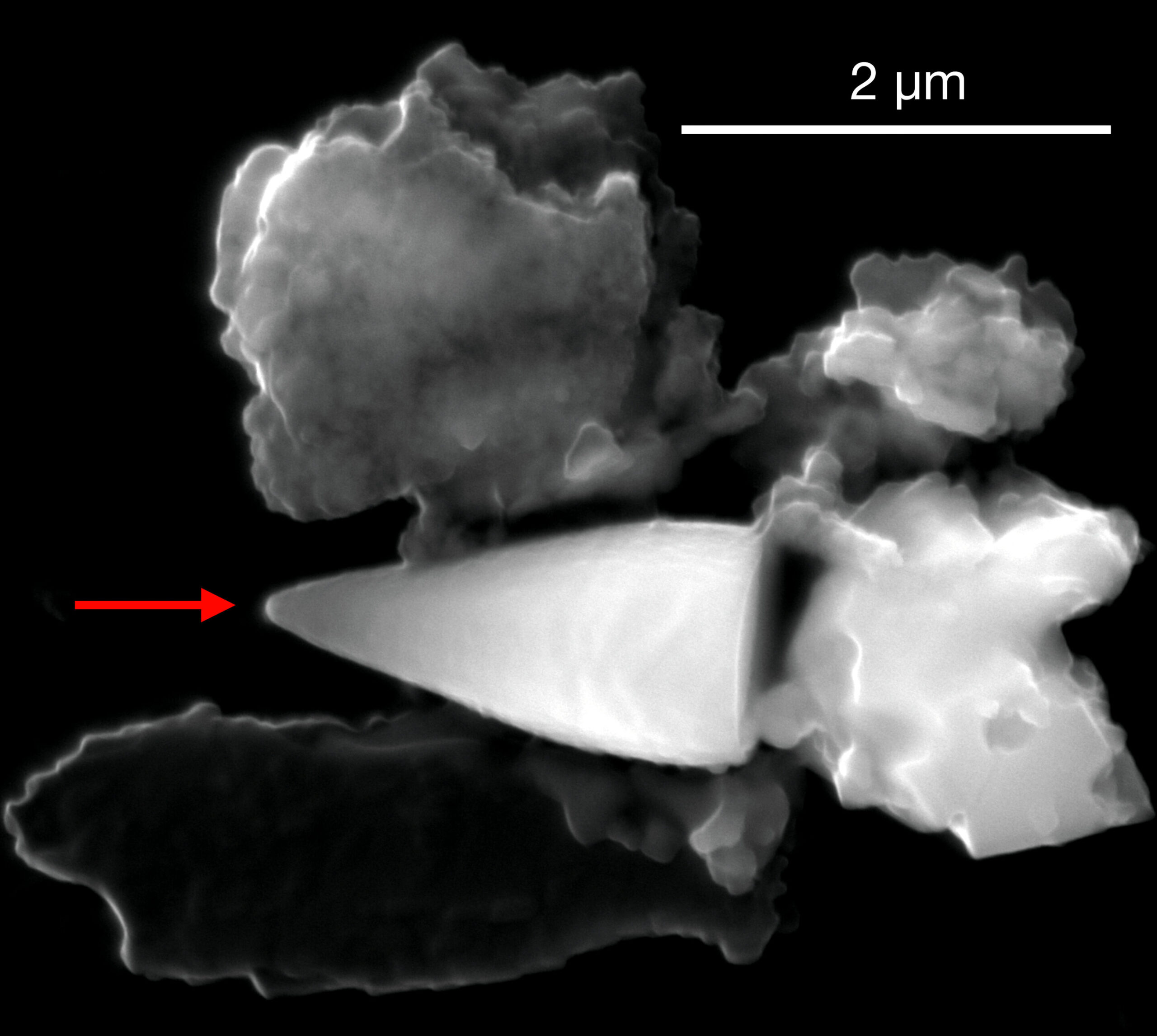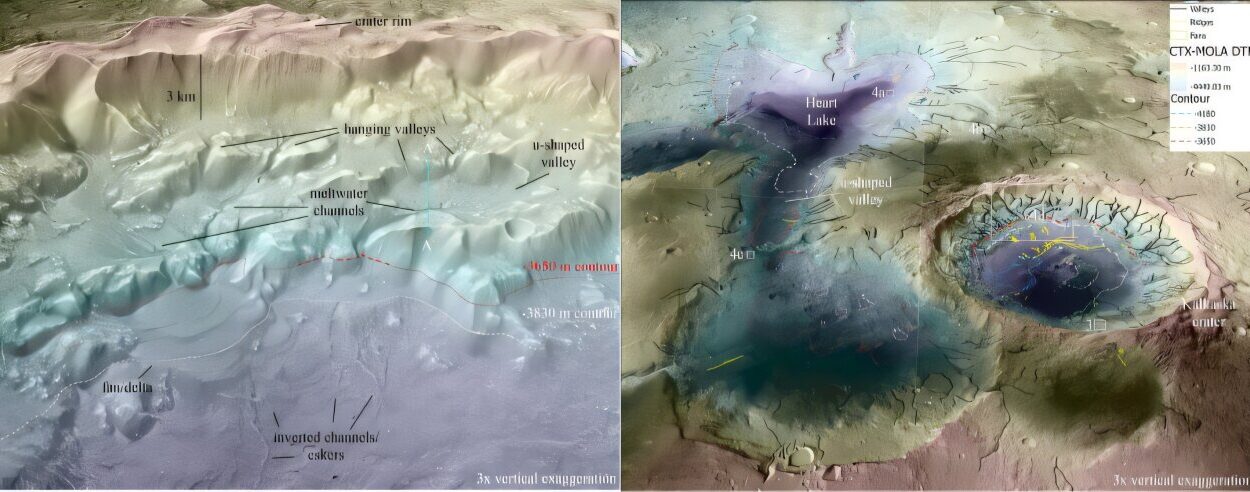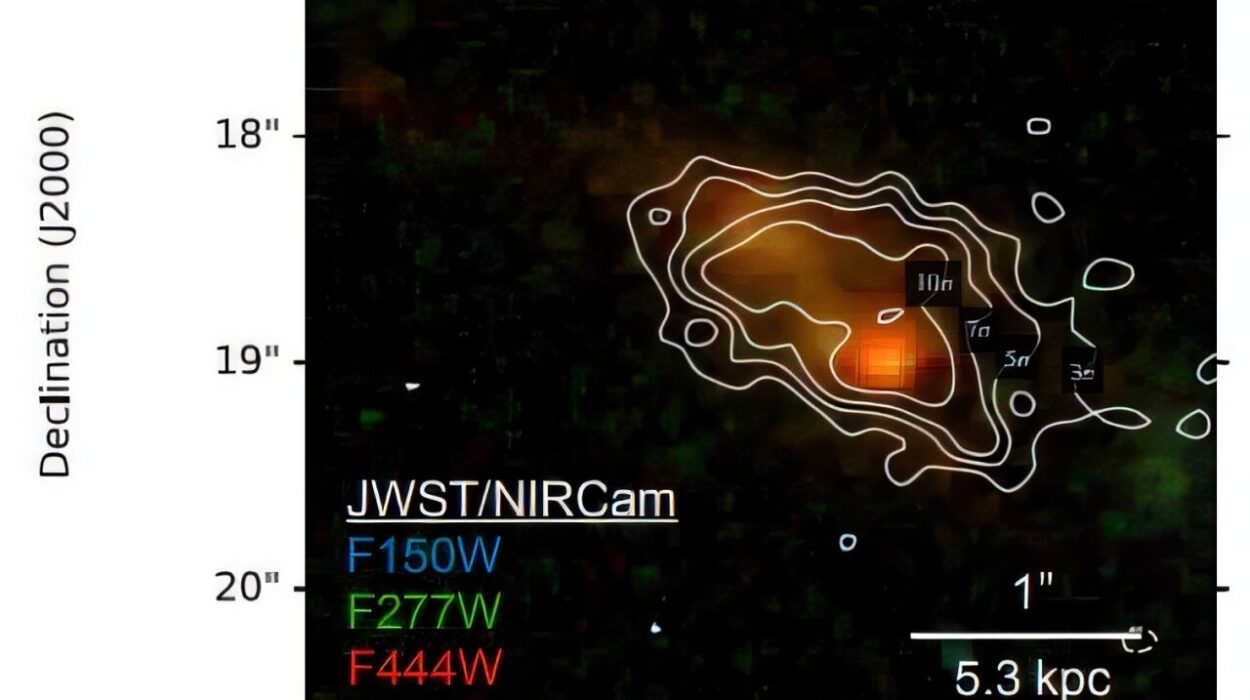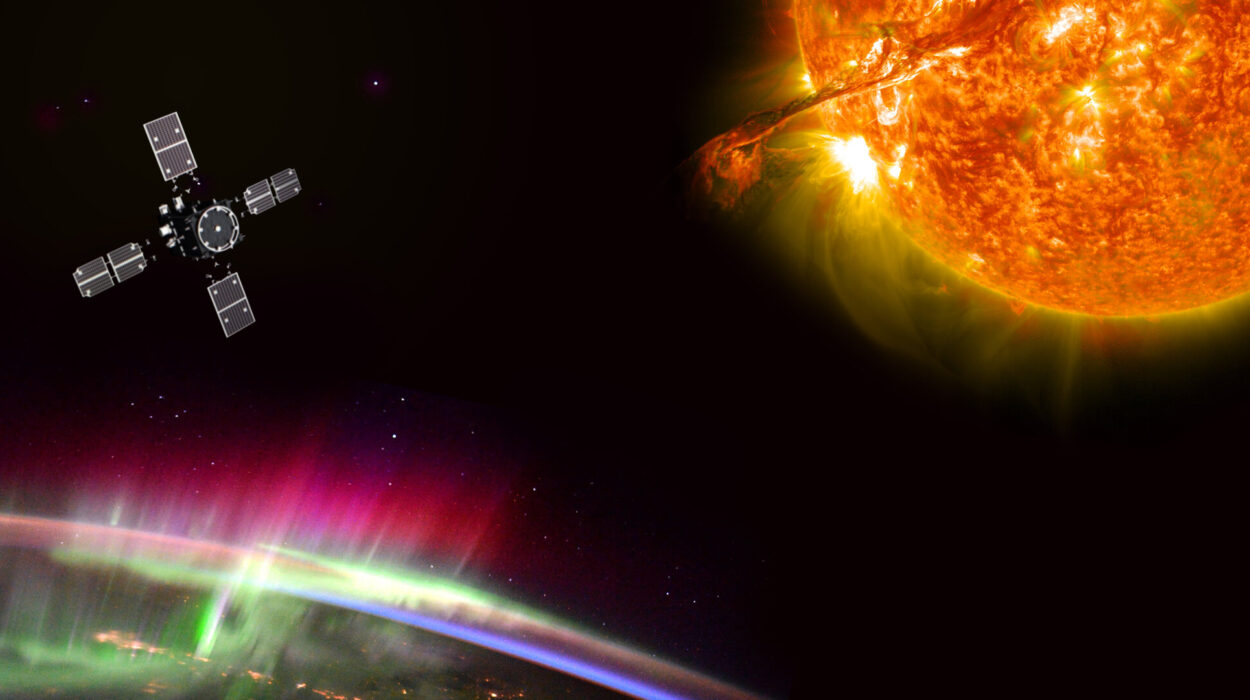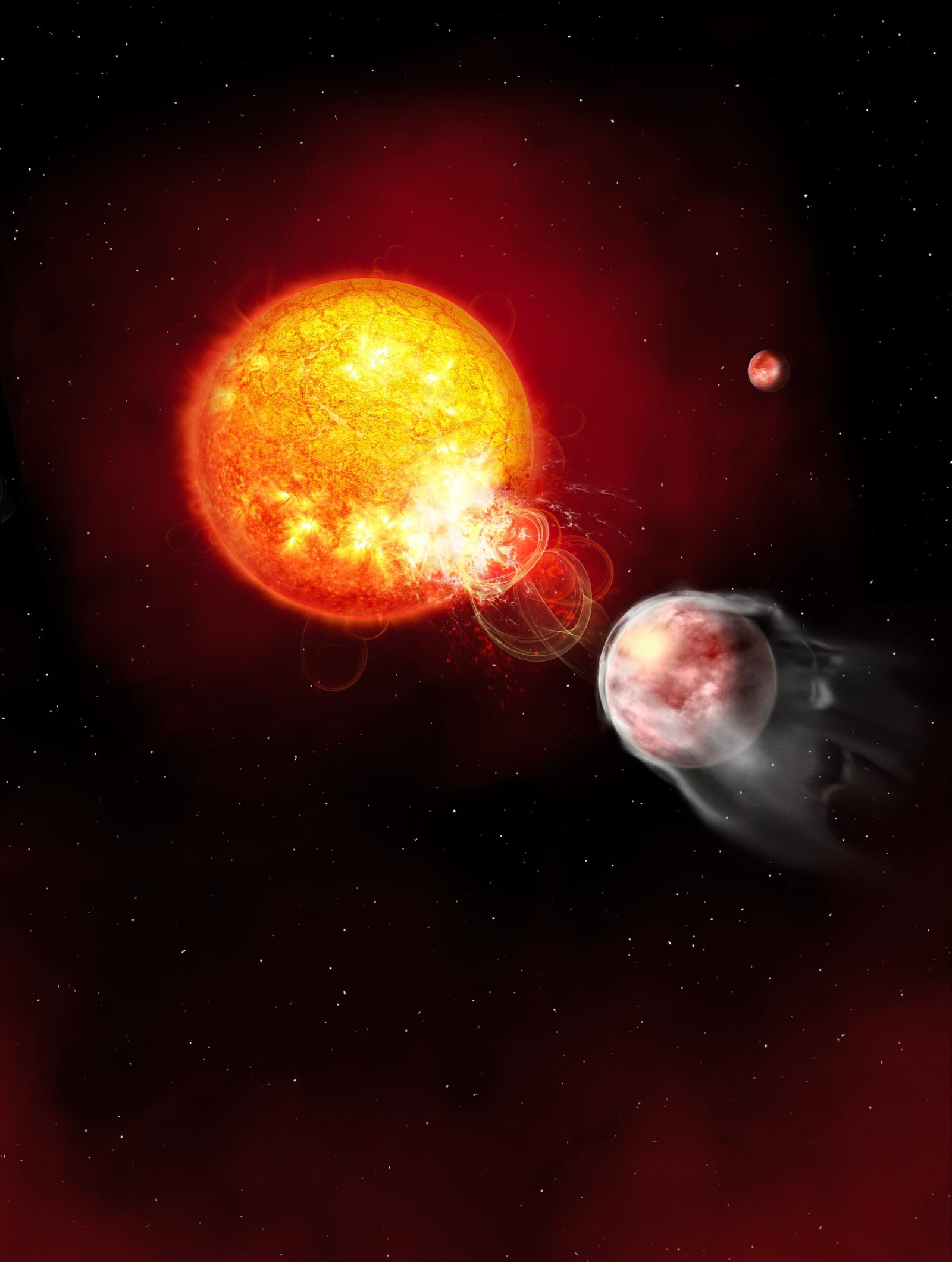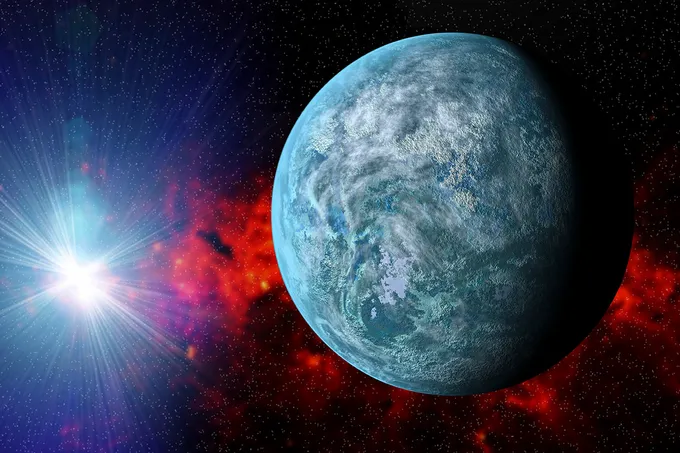Millions of years ago, deep beneath ancient oceans, tiny marine organisms crafted something extraordinary—microscopic particles of magnetite, the same mineral found in lodestones and modern compasses. These particles, however, were no ordinary creations. They were enormous compared to the magnetic grains produced by bacteria today—giant magnetofossils, ten to twenty times larger than any previously known biological magnetic structures.
For decades, scientists puzzled over their purpose. Were these magnetic crystals defensive armor, or something more profound—a tool for sensing the planet itself? A new international study has brought us closer to an answer, revealing that these ancient particles may have acted as natural compasses, helping long-extinct organisms navigate through the ocean by detecting subtle variations in Earth’s magnetic field.
The Discovery of the Giants
The story began when researchers uncovered unusually large magnetite particles in marine sediments. Magnetite, a form of iron oxide, is commonly produced by certain bacteria known as magnetotactic bacteria. These microorganisms align themselves with Earth’s magnetic field to orient and move efficiently in their aquatic habitats. The magnetite crystals they make—known as magnetofossils when preserved in sediments—are typically nanoscopic, optimized for magnetic alignment.
But the newly discovered particles broke all the rules. Measuring between one and two micrometers in size, these “giant magnetofossils” dwarfed their bacterial cousins. They came in elegant shapes—needles, spindles, bullets, even spearheads. Their size, however, made no sense for ordinary magnetic alignment; they were simply too large to behave like compass needles in a bacterial cell. So why would nature make them this big?
Theories in the Dark
At first, researchers proposed that these oversized particles had nothing to do with magnetism at all. Perhaps they were defensive tools—tiny shields made of hard mineral armor to fend off microscopic predators. After all, magnetite is tough, and its hardness could have given these creatures an evolutionary advantage in the predator-prey arms race of the ancient sea.
Yet, not everyone was convinced. The elegance of their magnetic structure, the precision of their geometry, and their distribution in marine sediments suggested a deeper function—one that tied directly to Earth’s invisible magnetic field.
A Compass Hidden in Stone
A team led by physicist Sergio Valencia of Helmholtz-Zentrum Berlin (HZB) and paleomagnetism expert Richard J. Harrison from the University of Cambridge decided to revisit the puzzle. Their hypothesis was as bold as it was beautiful: what if these magnetite giants were the ancient equivalent of navigation instruments—a biological compass that could detect the faintest shifts in magnetic intensity and direction?
If true, these organisms might have used Earth’s field not merely for passive orientation but for active navigation—mapping the magnetic landscape of the ocean like a natural GPS system, millions of years before humans ever dreamed of satellites.
A Technological Leap at Diamond Light Source
Testing this hypothesis required a delicate and unprecedented method. The researchers needed to visualize the internal magnetic structure of the magnetofossils in three dimensions—without destroying them. Traditional magnetic imaging techniques would have required slicing the sample, altering its internal magnetic domains and erasing the very evidence they sought to study.
At the Diamond Light Source in Oxford, UK—a world-leading synchrotron facility that produces brilliant X-rays—the team found their solution. They used a cutting-edge technique called pre-edge phase X-ray magnetic circular dichroism ptychography (XMCD ptychography), developed by Claire Donnelly at the Max Planck Institute for Chemical Physics of Solids in Dresden, Germany.
This non-destructive method allowed them to map the magnetic domain structure within the full three-dimensional volume of the fossil, at resolutions of just tens of nanometers. For the first time, scientists could peer into the heart of a giant magnetofossil without disturbing its ancient magnetic memory.
A Spearhead from Deep Time
The team analyzed a particularly striking particle shaped like a spearhead—1.1 micrometers wide and 2.25 micrometers long—retrieved from North Atlantic sediments that date back about 56 million years. The particle was part of a collection assembled by geologist Liao Chang at the University of Beijing.
Using magnetic vector tomography, the scientists reconstructed all three components of the magnetization throughout the entire volume of the grain. The image that emerged was astonishing. Inside this ancient mineral lay a perfectly formed magnetic vortex—a swirling configuration of magnetic domains capable of reacting sensitively to even the tiniest fluctuations in the surrounding magnetic field.
The Magnetic Vortex: A Window into Ancient Navigation
A magnetic vortex is not a random structure. It represents a highly stable state in which magnetic forces swirl around a central axis, maintaining balance and minimizing energy. In nature, such structures can act as incredibly sensitive detectors of magnetic changes.

This finding transformed how scientists view these fossils. The magnetite particles weren’t just passive minerals; they were potentially dynamic sensors, fine-tuned to register the delicate whispers of Earth’s magnetic field.
As Harrison explains, such sensitivity could have allowed marine organisms to “feel” magnetic gradients—to distinguish not only north from south but also subtle shifts in field strength and direction. This capability would have been invaluable for creatures living in the open ocean, where visual landmarks are absent.
In essence, these ancient beings may have carried internal magnetic maps, navigating through vast marine expanses long before the first compass was ever crafted by human hands.
Evolution’s Hidden Innovation
If these magnetic senses truly existed, they represent one of evolution’s most remarkable and overlooked inventions. Many animals today—birds, turtles, fish, and even some mammals—are known to use Earth’s magnetic field for orientation and migration. The fossil evidence provided by these magnetite particles suggests that such magnetoreceptive abilities evolved tens of millions of years earlier than previously thought.
Some of the sediments containing giant magnetofossils date back as far as 97 million years, implying that this sensory adaptation may have originated during the age of dinosaurs. It’s possible that these organisms laid the evolutionary groundwork for the magnetoreceptive navigation systems still found in modern species.
What began as a defensive mechanism—perhaps mineral armor to survive ancient predators—may have been repurposed by evolution into a biological compass. Nature, after all, often reuses and refines its inventions.
A Glimpse Beyond Earth
The implications of this research extend far beyond our oceans and into the cosmos. Similar magnetite particles have been discovered on the Martian meteorite ALH84001, one of the most studied rocks ever found on Earth. Some scientists believe these tiny structures might be remnants of ancient Martian microbes, though others argue they formed through geological processes.
Now, with the new non-destructive X-ray ptychography technique, researchers have a powerful tool to test the magnetic fingerprints of such extraterrestrial samples. If the magnetic domain structures of Martian particles resemble those of known biogenic magnetofossils from Earth, it could provide compelling evidence for past life on Mars.
As Harrison puts it, “It would be very exciting to use this technique to evaluate the morphological and magnetic fingerprints of those iron oxide particles. This could help in the search for evidence of past life.”
The Power of Collaboration
This discovery was not the work of a single mind or institution—it was the product of an extraordinary global collaboration. Physicists, paleontologists, geochemists, and materials scientists joined forces across borders and disciplines.
From the laboratories of Berlin and Cambridge to the powerful beams of the Diamond Light Source, this project demonstrated the strength of international cooperation in uncovering the secrets of our planet’s deep past. As Valencia notes, “This was a truly international collaboration involving experts from different fields, all working together to shed light on the possible functionality of these magnetofossils.”
The Legacy of Magnetic Life
The study of giant magnetofossils is more than a curiosity—it’s a reminder of how life and the planet are intertwined. Earth’s magnetic field, invisible yet omnipresent, has been guiding and shaping life for hundreds of millions of years.
These ancient particles tell a story written not in bones or shells but in magnetic signatures—a story of survival, adaptation, and ingenuity. They show that even microscopic organisms were capable of interacting with the fundamental forces of our planet in sophisticated ways.
As technology advances, we continue to peel back layers of mystery from Earth’s deep time, revealing how life’s creativity has always found ways to sense, adapt, and thrive.
More information: Harrison, R.J., et al. Magnetic vector tomography reveals giant magnetofossils are optimised for magnetointensity reception, Communications Earth & Environment (2025). DOI: 10.1038/s43247-025-02721-3
